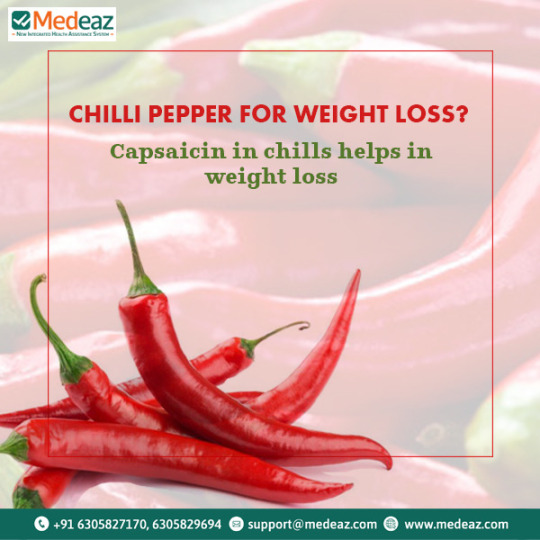Link

#travel wellness#holiday#physical health#health trip#physical strength#Benefits Of Wellness Travel#physical activities#wellness trip#wonderful holiday
0 notes
Link
Diabetes is a chronic condition characterized by excess blood sugar levels. Globally around 1 in 4 persons are affected by this condition. Managing diabetes involves a combination of therapy; diet, drugs and physical activity. This article provides an overview of what complications can result if diabetes is not effectively managed and the reasons why should it be managed
0 notes
Text
Ready To Wean you’re Baby?

Introduction
There is a lot of conflicting information as to how to wean babies off breastfeeding and get them used to eat solid foods. While every child’s needs are different, the first step is to wean the child from breastfeeding. While it may seem like a difficult task for some, a simple consultation with your lactation consultant can help. Nonetheless, here are some signs that can help you know your child is ready to wean. Then you can take the next step into what are the best food preferences for your baby’s nutrition.
Signs of Readiness
Many of you might think about rushing to wean your child as it’s a common myth most have that delaying can lead to slower growth. Nevertheless, the reality is far more different. A child below 4 months of age lacks adequate secretion of digestive enzymes. They have an immature gut which is limited in what foods it can digest and absorb. Hence, do not hurry!
The World Health Organization (WHO) suggests that infants should be exclusively breastfed until 6 months of age. Post 6 months, the mother can start weaning the baby from breast milk.
Every child is different from the other in reaching their physical milestones at a different age. The same applies to the readiness to weaning.
Readiness To Weaning
Observe, assess and feed when:
● They can sit up well with no support
● They gain the ability to munch and move the food backward using the tongue
● Coordinate their hands to guide food to the mouth
Wait till the child is showing these signs of readiness, not based on the mother’s feeding schedule but the baby’s growing stage.
Type Of Food To Start With
Great care should be taken on the introduction of the right kind of food. This duration is decisive as the eating patterns will now form the basis of long term food preferences.
● Start small by offering food which is easy to digest and has a smooth and pureed texture.
● Do not overburden the baby, as their organs are not completely developed and can only digest the simplest compounds (emulsified fat, simple carbohydrates).
● Once your child reaches toddlerhood, it will be necessary to give him/her a wider variety of baby foods that offer the range of nutrients to help their growth.
● Do not add salt or sugar to the weaning food. As per WHO guidelines, only 5% of the total energy should come from sugar.
● Keep in mind to start with mono-cereal. Amongst the various weaning foods, Rice is the first food fed to the babies as it is gluten-free and easily digestible. Make sure to include a combination of cereals and pulse as they provide `a mutual supplementation of amino acids.
● The child is unlikely to accept the taste of vegetables and fruits (bitter & sour) unless they are exposed to them during the weaning phase.
● Move through all stages as it is vital to expose the child to different textures.
● A large nutritional gap is formed if you don’t increase their nutritional intake from complementary food.
● An alternative to increase the energy content and to lower the dietary bulk of traditionally prepared weaning food was by incorporation of Amylase Rich Food (ARF), mainly obtained from cereals. The preparation of ARF is very simple and can be done by mothers at home.
● There is a higher need for Energy, Iron, Zinc and Vitamin A, to prevent malnutrition and deficiency.
Check for Allergies
One of the most common fears among parents is the threat of allergic reactions. Lack of diversity in weaning food may pave the path to food allergies and intolerance. UNICEF guidelines recommend following a Minimum acceptable diet where the child should receive foods from 4 or more food groups. Furthermore, to spot any reaction to a particular food, introduce one food at a time and observe.
Preventing food allergies is not withholding allergenic foods, but to gradually include them. Common allergic foods are:
● Milk
● Egg
● Soy
● Fish or any seafood
● Wheat
In most cases, it is noticed that the child outgrows the allergy becoming more resistant towards all kinds of food.
Developing Immunity
Weaning stage is a critical one. Up to 6 months, the child is completely dependent on the mother for nutrition and protection (immunity). They grow to be independent and start to come into greater contact with germs in the environment. It is observed that it is during this period when the child falls ill often as they have low immunity. Ensure that, weaning food prepared should be stored and fed in a hygienic and sterile way.
Keep A Check On The Developmental Stages
During these developmental years, poor nutrition has immediate consequences in constrained growth rate. If there is malnourishment in children at this age, it may even persist once they reach adulthood and may impact their cognitive and reproductive outcomes. Keep a monthly check on their feeding habits and growth rate. Follow these few simple rules and keep this as a time of fun and exploration.
Happy Weaning!
0 notes
Photo

Did you know that the #capsaicin present in #chilli helps in weight loss?
Visit: https://www.medeaz.com/
Whatsapp Us: https://bit.ly/2YmaSdM
For More Details, contact us:☎ 91 93463 43366
0 notes
Photo

5 #HomeRemedies to Get Rid of #Dandruff Naturally:
"1. Coconut Oil: Using coconut oil prevents dryness by improving hydration and thereby preventing dandruff.
2. Aloe Vera's hydrating nature is very beneficial in treating dandruff.
3.Apple cider vinegar: Add Apple Cider Vinegar to your routine to get rid of dandruff.
4. It has anti-fungal and cleansing properties hence help to cure dandruff related issues.
5. It has antimicrobial and anti-inflammatory properties that may help reduce symptoms of dandruff."
Visit: https://www.medeaz.com/
Whatsapp Us: https://bit.ly/2YmaSdM
For More Details, contact us:☎ 91 6305827170
0 notes
Photo

Healthy Heart: It is as simple as switching on a light. Switch all negative thoughts to positive thoughts to keep your #heart #healthy.
.
.
.
.
Whatsapp Us: https://bit.ly/2YmaSdM
Visit: https://www.medeaz.com/
For More Details, contact us::telephone: 91 6305827170
0 notes
Photo

10 Benefits of Water:
Increases Metabolism.
Aids in Weight Loss.
Expels Toxins.
Gives Healthy Skin.
Relieves Constipation.
Boosts Immunity.
Increases Appetite.
Rehydrates the Body
Cleanses the Colon.
Prevents Headaches.
Visit: https://www.medeaz.com/
Whatsapp Us: https://bit.ly/2YmaSdM
For More Details, contact us:� 91 6305827170
0 notes
Photo

JUICE FOR BEAUTIFUL SKIN:-All the best ingredients for your skin in a glass of delicious juice.
JUICE RECIPE:
Blend together!
- 2 carrots
- 2 tomatoes
- 1 cucumber
- 3 sprigs of mint
Serve chilled. Enjoy!
0 notes
Photo

Having two liters of water daily can keep diseases at bay, boost immunity, aid #weight #loss and give a radiant glow to your #skin.
visit: https://www.medeaz.com/
For More Details, contact us:☎️ 91 6305827170
Whatsapp Us @https://bit.ly/2YmaSdM
0 notes
Photo

Eye Health: Protect your eyesight with these 7 tips for eye-healthy nutrition, lifestyle, and preventive care.
#eyecare#vision#optometry#eye health#Nutrition#eyetips#eyecheckup#properlighting#glaucoma#health#eyesight#lifestyle#eyteexercises
1 note
·
View note
Photo




Nutrients That Build Strong Bones
Vitamin C, vitamin D & vitamin K helps you in preventing bones & cartilage diseases such as osteoporosis & arthritis.
#vitaminc#vitamind#vitamink#bones#cartilage#vegetable#food#diseases#osteoporosis#preventing#vitamin#arthritis#nutrients#healthtips#healthcare#health#medeaz
0 notes

